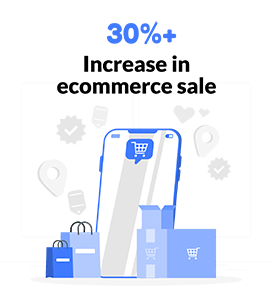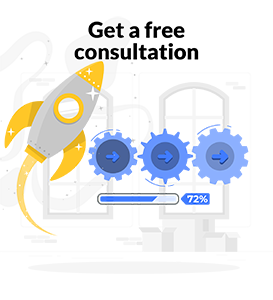How to use social media advertising for ecommerce
Social media advertising is a great way to promote your products. But, it can feel daunting if you’ve never been on this side of the marketing scene before. Here are some tips and tricks for getting started with social media advertising for ecommerce!
What is social media advertising?
Social media advertising is a form of online marketing. It uses social media platforms like
Facebook to promote your products or services. It’s a way for companies to extend their reach and connect with their audience. Also, it can be used to promote your business, products, and services.
Social media advertising is usually done through pay-per-click (PPC) ads. It appears at the top of search results when users search for keywords related to your brand or industry. For example, if someone searches for “pizza in San Francisco” on Google, you might see an ad from a local pizza place at the top of the page. The user doesn’t have to click on it! They only have to see it in order for it counts as an impression. So, if they do click on one of these ads then they end up on another website where they might make a purchase.

Why should you use social media advertising for ecommerce?
Social media advertising is a great way to promote your products because it’s:
- Affordable. You can easily set up and manage an ad campaign for $0.50 per day, but it’ll cost more if you want to get noticed by more people.
- Easy to set up. You don’t need any special skills or experience with social media marketing to create ads that will perform well. So even if you’re new at this type of marketing, you won’t have trouble getting started! Remember that each platform has its own rules about what types of ads are allowed. So, make sure that whatever content
How to create a social media campaign?
- Create a campaign.
- Set up tracking of the campaign.
- Create custom landing pages for each social media ad you create, and then launch the ads on your website (not in just one place).
- Monitor your results and optimize as you go along, repeating the steps above with each new social media ad you create.

Choose the right platform
The first thing you need to do is choose the right platform. This will depend on what your target audience uses, and where they spend their time. In many cases, it will also depend on whether or not there’s a large enough audience for you to reach at all.
- Choose a platform that is popular with your target audience (e.g., Facebook)
- Choose a platform that has a large user base (e.g., Facebook)
- Choose a platform that has an advertising tool suited to social media campaigns (e.g., Facebook)
- Choose a platform that suits your budget (e.g., Twitter Ads vs Instagram Ads)
Identify your target audience
Once you’ve decided to use social media advertising for your ecommerce store, the next step is to identify your target audience. In order to target an audience with ads, you need to know who they are. You can do this by analyzing the demographics, psychographics, and behavior of your ideal customer.
Now, it’s time to get creative! It always depends on how you market yourself within that specific demographic. Social media advertising offers a lot of flexibility when it comes to targeting people. It can be based on their location and interests as well as behaviors such as video watching or shopping for electronics online.
Create multiple ads to test
The third step to creating profitable ads on social media is to create multiple ads and test them. Most ecommerce businesses will start by testing two or three different ads. This A/B testing is with the same keywords, targeting options, and ad formats.
As you create your ad variations, make sure that you are using similar language in both the headline and description. Yet, try different images ad copy combinations as well.
You can also test various combinations of targeting options. For example, you might want to test where to keep your CTA. Meaning, the CTA button can be at the forefront. So, it makes people more likely to click it compared to putting it near the bottom of an image or video frame (or vice versa).

Set up the tracking of your campaign
The fourth step is to set up the tracking of your campaign. Tracking is critical to measure the success of your social media advertising. So, it’s important that you either use a free tool like Google Analytics or HubSpot, or a paid tool if you have more resources available. Some social media platforms offer built-in analytics tools as well. Yet, they don’t always give you accurate information about metrics like cost per click and conversion rate.
Tracking allows you to analyze how many people are interacting with your ads. What content they’re engaging with? How often people are clicking on each ad? Which ads are working better than others? Where the majority of clicks came from (Facebook vs Twitter vs Instagram)? And, other important metrics that help inform future campaigns.
Create custom landing pages
A landing page is a web page that you create to convert visitors into customers. It’s the last step in your sales funnel and it needs to have one goal: drive traffic from social media ads to specific products or services on your website.
So why should you create custom landing pages for social media advertising? Here are some key reasons:
- Landing pages allow you to track conversions so that you know if your ads are working or not.
- They can help increase conversions by providing relevant information such as testimonials, product descriptions, pricing details, and more.
- They give people who clicked on an ad a better understanding of what they’ll get if they buy something from your company.
Launch, monitor, optimize and repeat
Now that you’ve learned how to create and launch a social media advertising campaign, it’s important to remember that your work is not done. You need to monitor and optimize your campaign as it runs so that you can learn from what’s working and what isn’t. When implementing any marketing strategy, there are always changes that need to be made in order for it to be effective.
Social media advertising is no different. It’s constantly evolving. The platforms themselves change their algorithms and rules all the time. It means you have to keep up with them if you want your ads to perform well consistently over time.
Here are some steps for monitoring an ad campaign:
- Look at how much traffic each ad has driven so far (and which ones are underperforming)
- Make sure people aren’t clicking on ads accidentally due to placement or color scheme (this can happen when they’re trying hard not even look at the advert)

Boost your ecommerce sales with social media advertising
Social media advertising can be an effective way to reach new customers and boost your ecommerce sales.
Social media advertising is one of the most effective methods for generating awareness, increasing brand loyalty, and driving sales. With millions of people using social media platforms every day, you can reach a huge number of potential customers in just a few clicks. Your company’s Facebook page will display ads on other pages when users share or like your posts or items. This gives you the chance to advertise directly to people who may not have been interested in your products before. You can also target specific audiences based on their interests, hobbies, and location through the Google AdWords platform. The more relevant your advertisement is for particular groups of consumers, the more likely it is that those people will interact with it. It means more views for advertisers!
Conclusion
Social media advertising is a great way to reach new customers, especially if you’re just starting out. It can help you stand out in the crowded ecommerce space and get more people to click on your products. If you’re looking to grow your business or expand into new markets, then it’s definitely worth trying out!
Curious about the ins and outs of digital marketing?
Subscribe to our email newsletter for the latest digital marketing insights, and also make sure to read our blogs. See you next time!






